Carey Sweet contributed to this article.
Weekend Getaway: 12 Things to Do in Petaluma


Carey Sweet contributed to this article.

Inside what may be the tiniest kitchen in Sonoma County come some of the most epic flavors of Southeast Asia. But first you’ll have to find it.
Jamilah Nixon-Mathis, the “bastoni” (sticks) of the former Forchetta Bastoni in Sebastopol has quietly been hawking her curried noodles, banh mi, breakfast jok (a savory rice porridge) and specials like rice cake waffles with bits of Spam and green onions in the mix.
Just opened is her tiny brick and mortar on the Sebastopol Square. Little more than a walk-in closet filled with culinary pizzazz, Jamilah turns out one of our favorite banh mi sandwiches. More than just a snack with attitude, it’s a masterpiece of crusty French bread, savory barbecued meat, pickled carrots, cilantro and a swipe of pate.
Jok is especially lovely. It’s a warm and hearty breakfast (or lunch) dish with prickles of spicy ginger, Khao man gai sauce (a traditional Thai street food sauce of fermented soybean paste, tamari, sugar) with a custardy six-minute egg, herbs, fried shallot and green onions. You’ll never look at oatmeal the same way again.
Look for the pink, yellow and blue chairs under the trees. You’ll be glad you took the time to search it out. You can also find Jamilah at many events inside her colorful food truck. Open 7 a.m. to 3 p.m. daily. 150 Weeks Way, Sebastopol, facebook.com/jamsjoybungalow.
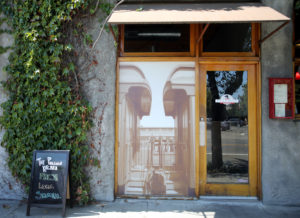
Pullman Kitchen Closes: After five years of amazing food in Railroad Square, Pullman Kitchen has closed. The buzz made the rounds quickly among the food community after the shutter, due according to owner Darren McRonald, to a lost lease at the 205 Fifth St. location. In an Instagram post, the news read simply, “The train has left the station. We’ve had a great time serving you for the past 5 years. However, we’ve lost our lease and have had to close. #staytuned #allaboard”.

The summer day is warm and the wind is absent. At lakes and other bodies of still water, dragonflies dart here and there, almost too fast to follow with your eyes. They are the messengers of summer, and they can be dazzling with their intricate beauty.
Now is the best time to spot dragonflies. They have emerged from the aquatic portion of their lives, when they were brown nymphs. The nymphs climb up on a leaf, where a complete metamorphosis occurs. Their exoskeletons crack open, and fully developed dragonflies emerge, their iridescent colors brilliant in the sun’s rays.
This second stage of dragonflies’ lives is short, just several weeks to two months depending on the species. Sonoma County, rich with lakes and rivers, is the perfect environment to spot them. Any place that has calm waters is a good bet. (Dragonfly expert Kathy Biggs recommends several promising locales; see her Where to Find Them list below.) Dragonflies and their close cousins, damselflies, are mating now, in midsummer, and most mate in the air. The female will then lay her eggs on a plant in the water, though some species lay theirs in the water directly.
If you spend some time watching them, you’ll be amazed by their flying ability. It helps to have four wings that can operate independently of each other; they can fly up, down, sideways, backwards, and even hover like a helicopter. Dragonflies need to be excellent fliers, as they eat by capturing insects in the air. They can eat hundreds of mosquitoes a day.
Over 30 species of dragonflies can be seen in Sonoma. Look for the bright orange Flame Skimmer, the turquoise Blue Dasher, or the aptly named Eight-spotted Skimmer.

Where to Find Them
Riverfront Regional Park, 7821 Eastside Road, Healdsburg
Spring Lake Regional Park, 393 Violetti Road, Santa Rosa
Lake Ralphine at Howarth Park, 630 Summerfield Road, Santa Rosa
Tolay Lake Regional Park, 5869 Cannon Lane, Petaluma
Pepperwood Preserve, 2130 Pepperwood Preserve Road, Santa Rosa
Bullfrog Pond in Armstrong Woods, 17000 Armstrong Woods Road, Guerneville

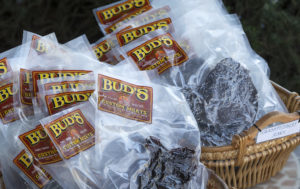
Long before Thomas Edison, Louis Pasteur, Prometheus, and the advent of fire, there was jerky. That chewy, dried hunk of meat coveted by cavemen and truckers alike.
From paleo moms to hiker dudes and their ravenous kids, the salty tang of cured meat has come a long way over the centuries.
Today, thanks in part to high-protein diets like keto and paleo, the jerky industry racks up more than $1 billion in annual sales, according to the industry market research group IBISWorld.
From the truck stop to Whole Foods, there are so many choices — teriyaki, salmon, buffalo, grass-fed, even mushroom jerky — it’s hard to know where to begin. But in an age when Jon Sebastiani has sold his Sonoma-based Krave jerky to the Hershey company for a reported $220 million, a pair of local, small-batch jerky purveyors — each with their own methods of flavoring and drying raw meat — seems a good place to start.
“This is the secret,” says Angelo Ibleto, 85, as he walks into the smoky backroom of Angelo’s Meats in Petaluma, where he’s drying a 200-pound batch of jerky.
The former Italian policeman, wearing a tattered Greek fishing cap, smiles like a kid on a scavenger hunt as he points to a large bowl suspended a few feet off the ground. “It’s my special Italian creation, also known as a cement mixer. I just put in a stainless steel pot, and now I can put my meat in there with the spices and enough moisture depending on the quantity of meat.”
It’s where the jerky takes a quick bath, mixing and tumbling for about 10 minutes before spending the next seven hours drying on racks at around 150 to 160 degrees.
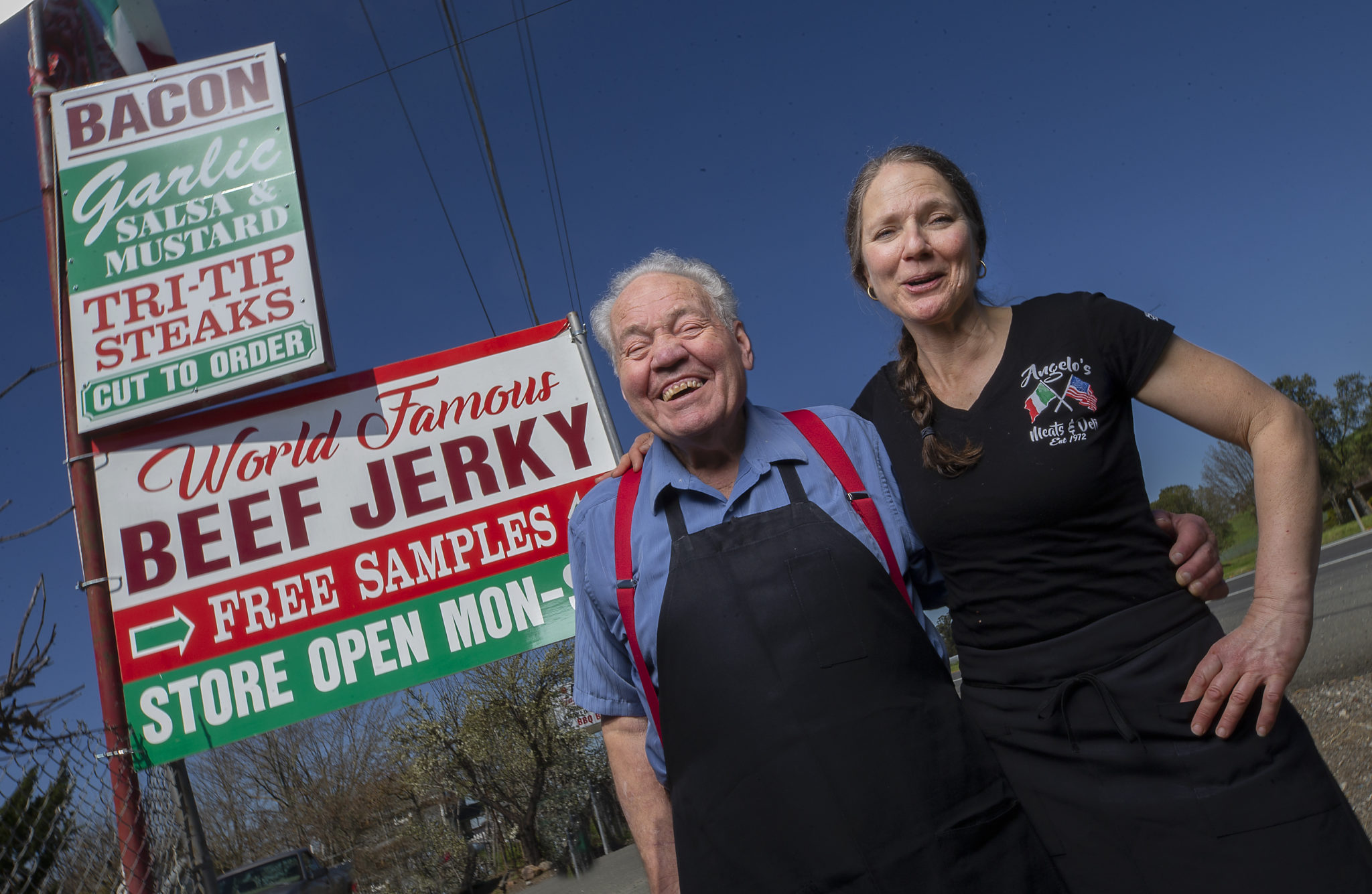
Ibleto has just finished prepping a batch, something he does three times a week, mostly to supply his Sonoma store — Angelo’s Wine Country Deli, which sells as much as 30 to 40 pounds of jerky a day. Originally experimenting with American beef, Ibleto now uses only grass-fed New Zealand flank steak for all his beef jerky.
After 47 years in the meat business and 27 of those making jerky, Ibleto swears by the taste test as the only way to truly appreciate his jerky.
“They say one picture is worth a thousand words,” he said. “But if you put it in your mouth, you know there’s no B.S.”
One of his employees brings over a few pieces of jerky, cut into bite-sized chunks, and we sample the goods.
A little on the dry side, the plain jerky is still the best way to appreciate the unadulterated taste of the grassfed New Zealand flank steak. But the savory Teriyaki Pepper might be the most complex, packed with a moderate spicy pepper bite and the syrupy moisture of teriyaki.
Ibleto makes nine types of beef jerky, including Cajun and VIP (flavored by the Wine Country fireand- ice combo of hot pepper and white wine), and two kinds of turkey jerky.
At some point during the tasting, his daughter Angela Dellinger, who is co-owner and manager of Angelo’s Meats, walks by and chimes in, “I’ll buy jerky anywhere — at Trader Joe’s, at Costco, wherever — and I’ve never seen another jerky that actually looks like ours, like a piece of steak, dried.”
Ibleto just smiles, as if to say, “See? I told you so,” and pops another piece in his mouth, even though he says he usually spits it out like an expert wine taster.
Just up the road in Penngrove, not far from Sonoma State University, Matt Gamba makes 10 kinds of jerky at Bud’s Custom Meats that range from wild pig, venison, and buffalo to spicy mixes of Bloody Mary, Hot Teriyaki, and the best-selling Cowboy Candy Beef.
In his office, wearing a camouflage hat and jacket and armed with a pair of yellow-handled, desk-top scissors, he snips a couple pieces of grass-fed beef jerky, and pops a piece in his mouth.
“We don’t add any moisture to this,” he says, working his way through the chew. “It’s just salt, pepper, and garlic.”
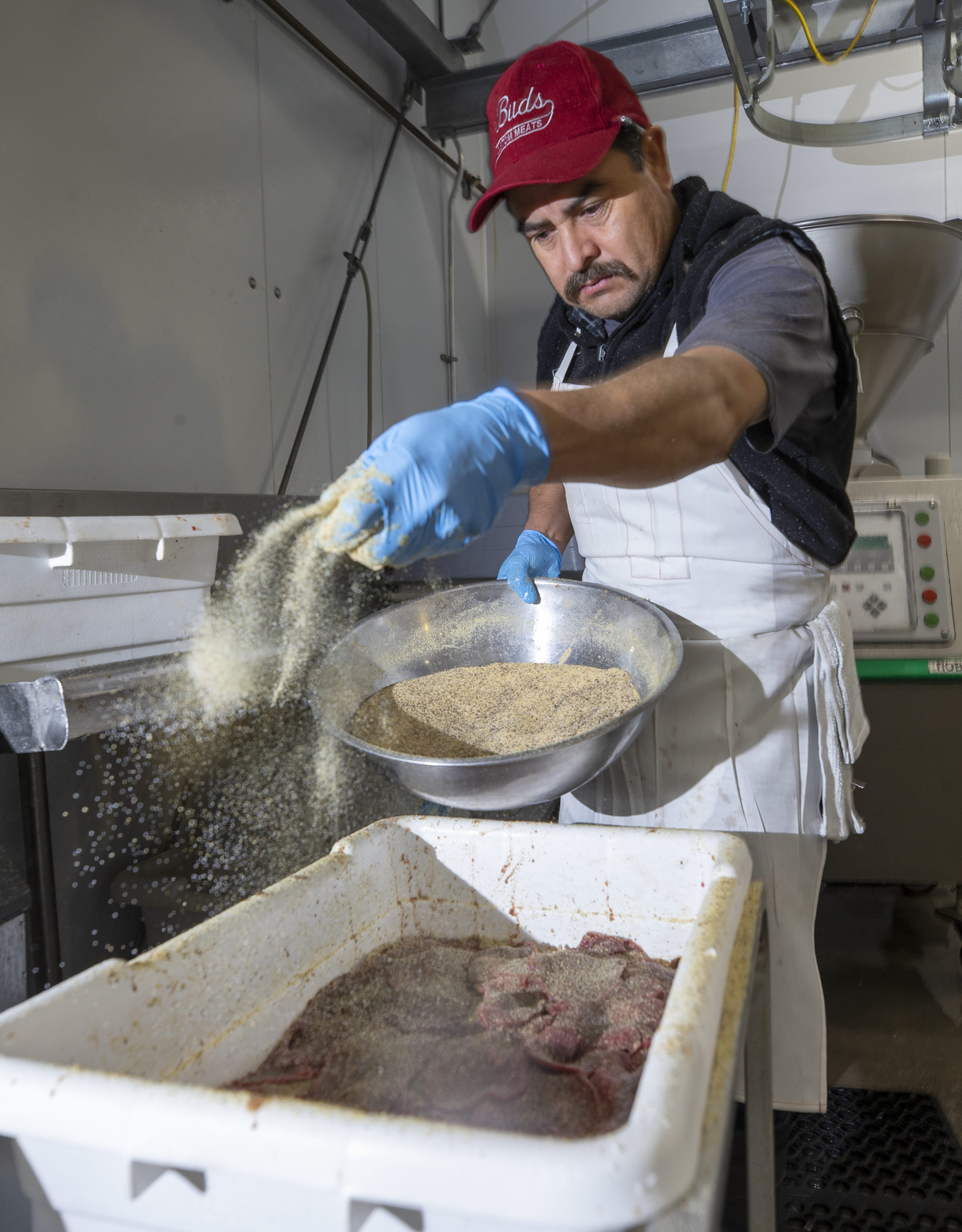
Not surprisingly, it’s super-dry and thin, almost papery, and takes a while to gather moisture in the mouth. When he moves on to sample the bestselling Cowboy Candy, he comments that “what stands out for me is that the flavor stays. It doesn’t drop off. Some jerkys you’ll bite into, and you work it and start getting some flavor, and then it just falls off and then you’re just chewing on meat.”
In contrast, when you taste Gamba’s Bloody Mary jerky, the taste buds light up with Worcestershire sauce, tomato, and spices, almost Cajun in tang, but without the kick.
“This one is very expensive to make,” he says. “It costs a fortune, but it brings people in the door.”
Gamba has seen local appetite for jerky fluctuate over the years, based on word of mouth, fad diets, and Yelp reviews. But at its core, it exerts an ancient appeal that reaches back into our DNA.
“I think it’s probably a primal instinct and what brings us back to that primal urge — where man is from and what man survived on back in the day,” he says.
While jerky only accounts for about 5 to 10 percent of his butcher and meat business, Gamba, 58, has been experimenting with different flavors, starting with teriyaki in the early 1980s. Cowboy Candy is the only USDA-licensed jerky he can sell in other stores outside Bud’s.
“Just the humidity and the length of time you soak or dry can change the whole flavor profile,” he says, strolling back to the smokehouse, where Bacon Candy strips are about to go in after a round of hams are done smoking.
At the moment, 360 pounds of jerky meat are soaking in bins. He typically marinates the grassfed beef jerky for a day and around three days for all other varieties, preferring a stationary bin rather than a tumbler. At Bud’s, they usually smoke around 80 to 100 pounds a week, cooking it at 160 to 170 degrees for around six hours.
For his beef jerky, Gamba uses mostly inside round meat, trimming any excess fat. But he also makes a flank-steak jerky that’s very lean. And then he makes a Bacon Candy that’s real fatty. To savor it, he says, “you’ve gotta love fat.”
So, after more than three decades of making jerky and cultivating a loyal following, does he ever worry about employees stealing his secret recipes? Not at all.
“Have fun,” is his only advice, he says with a laugh.
“It’s a pain in the ass. Good luck. I don’t recommend it,” he adds. “They see what I have to go through here making this stuff, and they don’t want any part of that.”

Back in the 1940s, long before it was world-renowned for its vineyards, Sonoma County was recognized as a major commercial apple-growing center. Apple trees once covered over 14,000 acres of the county, 10,000 of them devoted specifically to the Gravenstein. Heavy producers but a climate-sensitive varietal, “Gravs” — as they are affectionately known by locals — thrived in the sandy soil and cool summers around Sebastopol, guaranteeing the farmers a reliable harvest. The orchards were being planted at such a clip that state Route 116 was dubbed the Gravenstein Highway.
Flash forward to the 1980s, when 14 different countries were now growing apples, driving prices so low that many local farmers called it quits. This, and the fact that Gravensteins do not ship well, left the county with only 3,000 acres of apple orchards, a third of those devoted to Gravs.
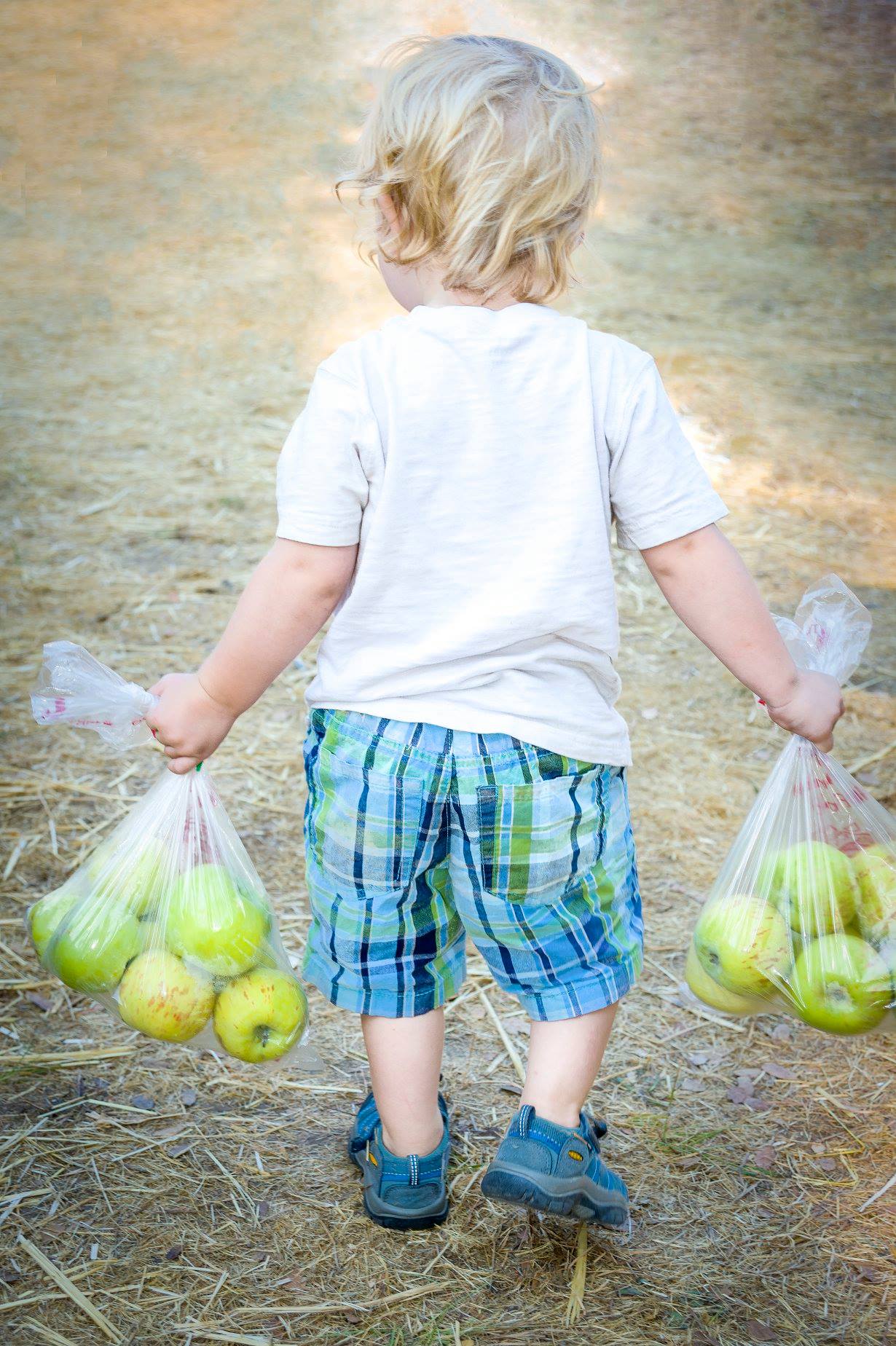
Today, the forbidden fruit is making a comeback, and there is much to celebrate. Eighty-five percent of west county orchards have gone organic, and in 2005, Slow Food USA declared the Gravenstein apple a Heritage Food, a designation that aims to preserve local foods and traditional cooking styles. There’s also an increasing interest in hard cider, so apple growers are once again able to turn a profit. As for Sebastopol, the community has been celebrating Gravs for the past 45 years with the annual Gravenstein Apple Fair.
On August 17 and 18 at Ragle Ranch Regional Park, under the shade of the majestic oaks, fairgoers will gather to applaud all things apple.
Like music? Thirteen bands on two stages offer everything from zydeco to jazz to blues to mariachi.
Enjoy the challenge of a competition? Test your skills at apple juggling or caramel apple eating. Libations more your thing? Mosey on over to the Craft Cider Tent. Learn to make cyser, a cross between mead and apple cider, or create a bee habitat from a log, using old-fashioned hand tools, in the DIY arena.
Over 100 vendors will be on hand to tempt with home and garden items, ceramics, art, and jewelry. And children can delight in the petting zoos, storytelling, singalongs, stilt walkers, and puppet shows. Be sure to come hungry, ready to sample Grandma’s Apple Fritters (made by actual grandmas and grandpas), as well as a few of the over 20,000 pounds of apples, and a slice of one of the 1,200 apple pies that will be sold over the weekend.
So what does the starring fruit actually taste like? Gravs are crisp and tart, with a trace of honey.
They are pick-and-eat apples, their flavor somehow capturing that exquisite moment when the dog days of summer give way to the arrival of fall.
gravensteinapplefair.com
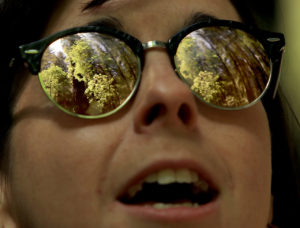
It’s summer. The sun is shining, the sky is blue, and you’re stuck inside scrolling on your smartphone looking at people having a great time outdoors. Sounds familiar? Well, you’re not alone.
The average American spends nearly four hours a day staring at computer, tablet and smartphone screens, and an additional four hours or so watching television, according to the financial news site MarketWatch. Medical researchers, cited in a Forbes article, recently concluded that the heaviest smartphone users exhibit “the greatest degree of depression, anxiety, loneliness, and isolation.” The antidote? “We need to devote time to ourselves, nourish our brains and engage in exercise,” as well as “reconnect with nature,” writes the author of the article, an emergency physician.
Needless to say, it’s hard to kick digital addiction (after all, your phone is designed to keep you constantly engaged). Thankfully, Sonoma County offers plenty of ways to stimulate your senses sans screens. If you want to take a break from your computer, tablet and phone, click through the gallery for tips on how to do a digital detox.
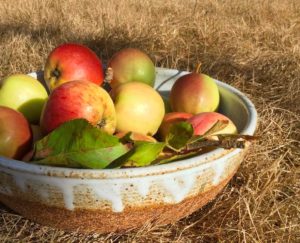
It’s time to get excited about apples! Sebastopol’s celebrated Gravenstein crop is here and there are ways to get in on the eating action. Here are a few products from Sonoma County stores to help you celebrate all that juicy flavor—click through the above gallery for details.

Bohemian style (aka Boho Chic) is an enduring trend in Sonoma County. That may be because of its satisfying blend of casual, rustic and romantic qualities and how it mirrors so well the local lifestyle. Here are some great Boho finds for your home and wardrobe to give your space or your look a relaxed and pretty vibe—click through the above gallery for details.